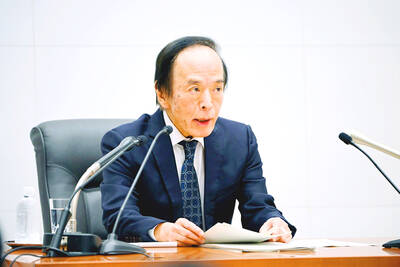Luxury house prices in Taipei last quarter increased 14.9 percent year-on-year, the 10th-highest rise globally, as upscale housing around the world recovered amid monetary easing and a surge in safe-haven purchases, a survey by London-based property consultancy Knight Frank LLP showed.
Prime prices across 46 international cities increased on average 8.2 percent, accelerating from a 4.6 percent gain in March, Knight Frank’s Prime Global Cities Index showed.
The index tracks the performance of luxury residential prices in key cities on a quarterly basis.
“Taiwan’s solid economic fundamentals, ample liquidity, stock rallies drove capital to take shelter in luxury housing,” Knight Frank Taiwan researcher Andy Huang (黃舒衛) said.
The favorable factors, coupled with record-low interest rates, accounted for the 14.9 percent increase from April to June, compared with a 6.5 percent increase three months earlier, Huang said.
Last quarter, three apartment units at an expensive residential complex in Taipei’s Xinyi District (信義) changed hands, he said, adding that an apartment in Zhongshan District’s (中山) Dazhi (大直) area was sold for NT$2.2 million (US$78,735) per ping (3.3m2), while another in Zhongcheng District (中正) was sold for NT$2.5 million per ping.
The deals indicate that luxury housing sale prices spike when buyers are keen, Huang said.
Globally, Toronto topped the survey with an annual price growth of 27 percent, driven by strong buyer appetite and low inventory, the consultancy said.
The next three spots were Asian cities, defying a recent raft of cooling measures, it said.
Prices in Shanghai soared 21 percent, gained 19.8 percent in Guangzhou, China, and advanced 19.5 percent in Seoul, it added.
“Until now, the [COVID-19] pandemic-fueled house boom was most evident in the mainstream market, but the prime sector has now surged ahead,” Knight Frank said.
Knight Frank said it expects London, New York, Paris and Dubai to move up the rankings this quarter, as travel restrictions ease and international buyers start to recognize value in the cities.
Likewise, the local property market is expected to rebound after the government late last month eased disease prevention measures, Huang said, adding that growing inflationary pressure would lend support to safe-haven purchases.

Taiwan Semiconductor Manufacturing Co (TSMC, 台積電) last week recorded an increase in the number of shareholders to the highest in almost eight months, despite its share price falling 3.38 percent from the previous week, Taiwan Stock Exchange data released on Saturday showed. As of Friday, TSMC had 1.88 million shareholders, the most since the week of April 25 and an increase of 31,870 from the previous week, the data showed. The number of shareholders jumped despite a drop of NT$50 (US$1.59), or 3.38 percent, in TSMC’s share price from a week earlier to NT$1,430, as investors took profits from their earlier gains

In a high-security Shenzhen laboratory, Chinese scientists have built what Washington has spent years trying to prevent: a prototype of a machine capable of producing the cutting-edge semiconductor chips that power artificial intelligence (AI), smartphones and weapons central to Western military dominance, Reuters has learned. Completed early this year and undergoing testing, the prototype fills nearly an entire factory floor. It was built by a team of former engineers from Dutch semiconductor giant ASML who reverse-engineered the company’s extreme ultraviolet lithography (EUV) machines, according to two people with knowledge of the project. EUV machines sit at the heart of a technological Cold

TAIWAN VALUE CHAIN: Foxtron is to fully own Luxgen following the transaction and it plans to launch a new electric model, the Foxtron Bria, in Taiwan next year Yulon Motor Co (裕隆汽車) yesterday said that its board of directors approved the disposal of its electric vehicle (EV) unit, Luxgen Motor Co (納智捷汽車), to Foxtron Vehicle Technologies Co (鴻華先進) for NT$787.6 million (US$24.98 million). Foxtron, a half-half joint venture between Yulon affiliate Hua-Chuang Automobile Information Technical Center Co (華創車電) and Hon Hai Precision Industry Co (鴻海精密), expects to wrap up the deal in the first quarter of next year. Foxtron would fully own Luxgen following the transaction, including five car distributing companies, outlets and all employees. The deal is subject to the approval of the Fair Trade Commission, Foxtron said. “Foxtron will be

INFLATION CONSIDERATION: The BOJ governor said that it would ‘keep making appropriate decisions’ and would adjust depending on the economy and prices The Bank of Japan (BOJ) yesterday raised its benchmark interest rate to the highest in 30 years and said more increases are in the pipeline if conditions allow, in a sign of growing conviction that it can attain the stable inflation target it has pursued for more than a decade. Bank of Japan Governor Kazuo Ueda’s policy board increased the rate by 0.2 percentage points to 0.75 percent, in a unanimous decision, the bank said in a statement. The central bank cited the rising likelihood of its economic outlook being realized. The rate change was expected by all 50 economists surveyed by Bloomberg. The